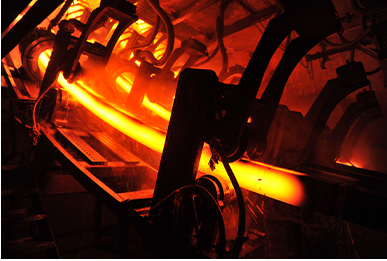Дек . 24, 2024 03:43 Back to list
Effective Sound Absorption Solutions for Enhanced Office Environments and Acoustics
Sound Absorbing Materials for Office Spaces
In today's fast-paced work environment, creating a conducive atmosphere for productivity is paramount. One often-overlooked element of office design is sound management. Excessive noise can be a significant distraction, leading to decreased concentration and reduced employee satisfaction. As a solution, many companies are turning to sound absorbing materials to help manage acoustic environments effectively.
Understanding Sound and Noise
Before diving into sound absorbing materials, it’s essential to understand the concepts of sound and noise. Sound is a type of energy that travels through the air in waves, while noise is typically defined as unwanted or disruptive sound. In office settings, noise can originate from various sources—conversations, phone calls, machinery, and even the hum of air conditioning units. When these sounds bounce off hard surfaces, they can amplify the noise level, making the workspace uncomfortable.
Why Sound Absorption Matters
Sound absorption refers to the ability of a material to reduce the sound waves' intensity as they strike its surface. Materials that absorb sound help minimize echo and reverberation in a space, creating a quieter environment that can significantly improve focus and efficiency. Research has shown that reducing noise levels in the workplace can lead to increased productivity, reduced stress, and an overall better work experience for employees.
Types of Sound Absorbing Materials
There are several types of sound absorbing materials commonly used in office spaces
1. Acoustic Panels These panels are designed explicitly for absorbing sound and can be installed on walls or ceilings. Made from materials such as fiberglass, foam, or mineral wool, acoustic panels come in various sizes, shapes, and colors, allowing for aesthetic incorporation into the office design. Their effectiveness can vary, so selecting the right density and thickness is crucial.
2. Carpets and Rugs Textiles naturally absorb sound, making carpets and rugs a practical choice for reducing noise levels. They not only provide a degree of sound insulation but also add warmth and comfort to the office space. When paired with high-density underlays, carpets can significantly enhance sound absorption.
3. Ceiling Tiles Acoustic ceiling tiles are often used in commercial spaces to manage noise. These tiles are designed to absorb sound waves, making them effective for open-plan offices where noise can travel quickly. Many acoustic ceiling panels are also environmentally friendly, contributing to sustainable office design.
sound absorbing materials for office

4. Soft Furnishings Incorporating soft furnishings like upholstered furniture, curtains, and cushions can aid in reducing sound levels. These materials absorb sound instead of reflecting it, creating a more pleasant auditory atmosphere.
5. Bookshelves and Greenery Strategically placing bookshelves filled with books or plants can also help absorb sound. While they are not explicitly designed for sound absorption, they contribute positively to the acoustics of a space. Plants can enhance the overall ambiance while improving air quality, making them a double benefit.
Implementation Strategies
When integrating sound absorbing materials into an office design, several strategies can be employed
- Assess the Space Conduct an initial assessment of the office to identify noise sources and areas most affected by sound propagation. This will help in defining where to implement sound absorbing materials effectively.
- Combination of Materials Use a combination of different sound absorbing materials rather than relying on one type. For instance, pairing acoustic panels with carpets and soft furnishings can create a more comprehensive solution.
- Zoning Consider creating quiet zones within the office where employees can retreat to focus without distractions. These areas can be fitted with additional sound absorbing materials to facilitate concentration.
- Consult Professionals For larger projects or spaces with significant noise issues, consulting with an acoustics expert can provide tailored solutions. These professionals can offer valuable insight into material selection and placement for optimal sound absorption.
Conclusion
Incorporating sound absorbing materials into office design is not merely a trend but a necessary consideration for modern workplaces. As organizations strive to create environments that foster productivity and employee well-being, the importance of acoustic management cannot be overstated. By investing in sound absorbing materials, companies can enhance the auditory experience, ultimately leading to a more motivated and efficient workforce.
-
Environmentally Friendly Granule Covering Agent: Sustainable Solutions
NewsAug.27,2025
-
High Purity Graphitized Petroleum Coke & Low Nitrogen Recarburiser
NewsAug.26,2025
-
Fe-C Composite Pellets for BOF: Enhance Efficiency, Lower Steelmaking Costs
NewsAug.25,2025
-
Durable Building Material for Round Wall Exporters | Custom Shapes
NewsAug.24,2025
-
Tundish Dry Vibrator: Boost Steel Casting Performance
NewsAug.23,2025
-
Thermal Insulation Cups Materials Exporters - Quality & Durable Supplies
NewsAug.22,2025
